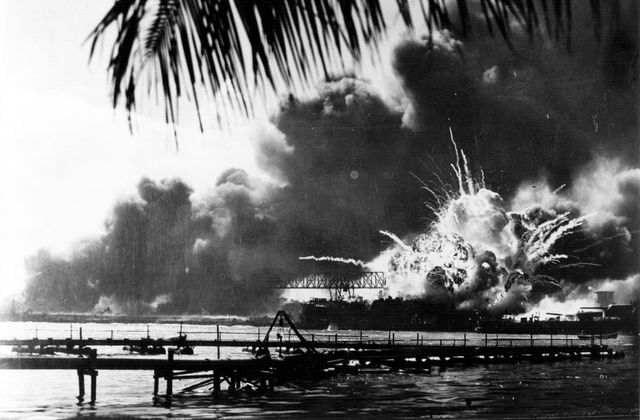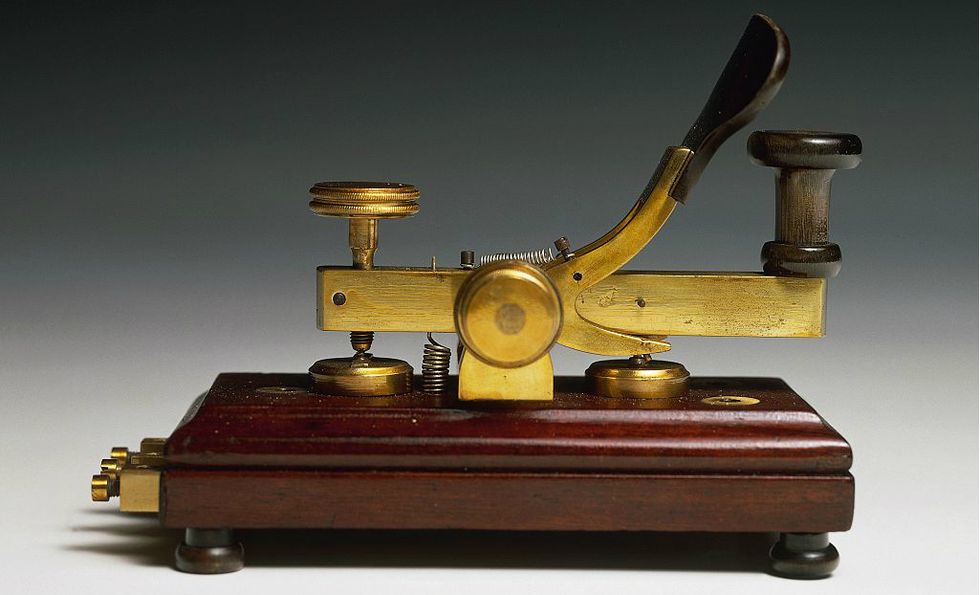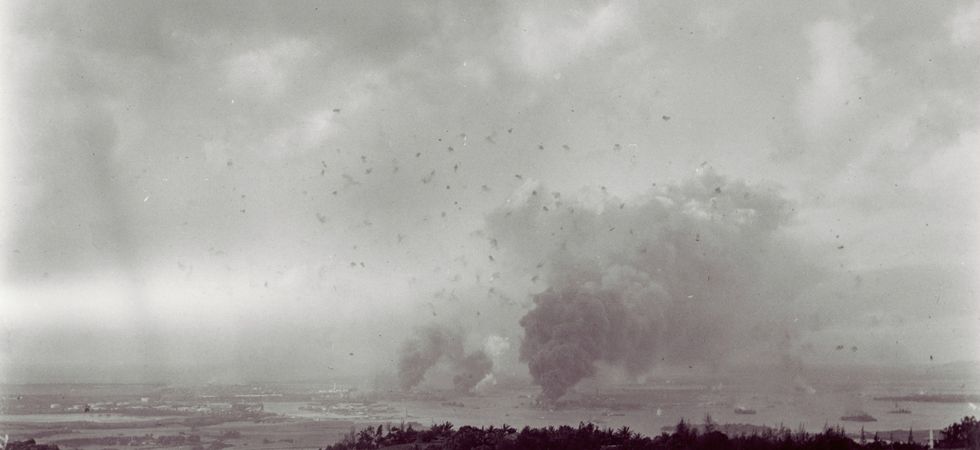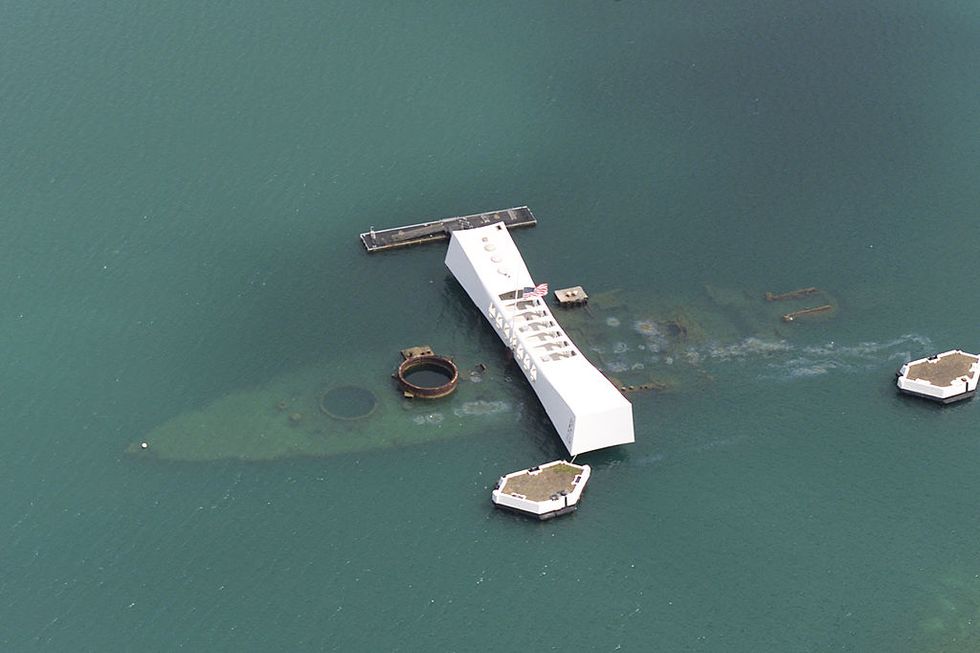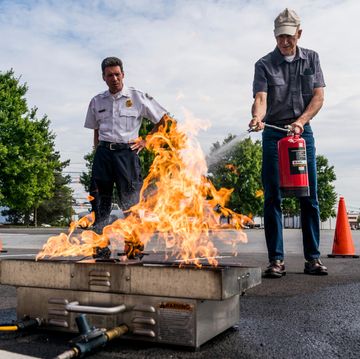December 7, 2021: Today marks the 80th anniversary of the attack on Pearl Harbor. Nearly a century after the Imperial Japanese Navy Air Service launched their deadly attack—a move that would spur the U.S. to join the war effort and change the course of history—mysteries surrounding that day remain.
To mark this solemn occasion, we're republishing this article from 2018, which sheds light on the strange events leading up to and following the attack.
More than three-quarters of a century have passed since the "day that will live in infamy." Just before eight o'clock in the morning on December 7, 1941, a Japanese force made up of 350-plus planes, supported by submarines, cruisers, destroyers, and battleships, attacked Pearl Harbor, a U.S. naval station on Oahu, Hawaii.
In total, 2,403 people died in the attack on Pearl Harbor. Japan destroyed 19 American ships, including the USS Arizona, which remains underwater. You know what came next. The aftermath of the attack plunged the country into World War II, making it, as The New York Times reported the next morning, "... the first time in its history, the United States finds itself at war against powers in both the Atlantic and the Pacific."
But even now, 80 years later, there's probably a lot you don't know about Pearl Harbor. We look at five lesser-known facts about one December day that changed the course of history.
The "Sleeping Dragon" Almost Stayed Asleep
It's a day taught in every history book, and arguably one of the most transformative days in American history—next to Independence Day and 9/11. But according to historian and author of Pearl Harbor: From Infamy to Greatness, Craig Nelson, it should never have happened in the first place. Speaking with Popular Mechanics, Nelson says failed negotiations on both sides of the table failed to prevent war.
✈︎ Don't Miss Our Best-in-Class Defense Deep Dives
- Russia and Ukraine Are Dangerously Close to War. That Puts the U.S. in a Bind
- Why the M1A1 Abrams Is Such a Badass Tank
- The Most Important World War II Battles
Erroneously, America pigeonholed Japan into a similar fascist system like Nazi Germany, which was ravaging Europe at the time. "They thought the Japanese were just like the Nazis, in that they were unified behind a philosophy, a madman dictator, and the unstoppable force of fascism," says Nelson. "They weren't ... the Japanese government was so chaotic that it changed hands 15 times in 14 years." Because of this constant turnover, there were moments in the lead-up to war that the United States could have negotiated a peace with an incoming government, most notably with Japan's last civilian prime minister Fumimaro Konoe. America's misunderstanding of Japan's political turmoil eventually led to war.
Unfortunately, things on the other side of the Pacific weren't much better. Not everyone was in agreement about entering into war with the United States, including the admiral who planned the Pearl Harbor attack, Isoroku Yamamoto, who had actually studied at Harvard. "He ... warned his military superiors that such an attack would awaken a giant sleeping dragon that Japan could not hope to materially defeat," Keith Huxen, senior director of research and history at the National World War II Museum in New Orleans, tells Popular Mechanics, "However, he was ignored."
While Admiral Yamamoto did lead the attack as ordered, he turned out to be right about waking up America from its global slumber and forever changing the course of history.
One Japanese Communications Officer Changed the World Forever
In the run-up to World War II, wireless telegraphy was the most effective and efficient way for far-away nations to communicate. This was certainly the case between the United States and Japan, who were talking via cable right up to the attack. On December 6, President Roosevelt sent a cable to his Japanese counterpart, Emperor Shōwa, in hopes of "dispelling the dark clouds" by appealing to the two countries' long-standing peace and friendship. But Major Morio Tomura, an army officer stationed at the Tokyo's cable office, delayed the conciliatory cable arriving for the Imperial Palace by ten hours because he believed that war was Japan's destiny.
When the cable finally arrived, Japan had already composed a 14-part cable announcing the end of negotiations that was to be sent back to America with the intention of delivering it 30 minutes before the strike. Although it might sound weird in the context of modern warfare, it's part of the samurai/bushido honor code to notify someone before attacking them.
However, the same Major Tomura delayed the cable yet again and it didn't arrive until nearly two hours after the attack. "The entire day of infamy," says Nelson, "you can almost say was caused by this one character."
The Mysterious New Yorker Ad That May Have Been a Warning
On November 22, 15 days before the strike at Pearl Harbor, several odd advertisements showed up in New Yorker Magazine for a dice game called "The Deadly Double." The initial ad features a headline reading "Achtung, Warning, Alerte!" (German for "Attention, Warning, Alert") with an illustrated image of people in an underground bunker enjoying the dice game.
Underneath, further copy says, "We hope you'll never have to spend a long winter's night in an air-raid shelter, but we were just thinking ... it's only common sense to be prepared." It then explains all the things one will need, like canned goods, blankets, cigarettes and "Chicago's favorite game ... (in bold, stylized letters) The Deadly Double." Throughout the magazine, the other advertisements refer back to this main one, however one featured a close-up pair of dice with the numbers 12 and 7 showing.
For some, these extraordinarily bizarre ads were actually a warning about Pearl Harbor. According to Nelson's book, investigations into the matter led to dead-ends since the ad was delivered in person to the office and the fee paid in cash. There are conflicting reports that the company mentioned (the Monarch Publishing Company out of New York) and its game ever even existed. Either way, Nelson thinks the ads were in poor taste and definitely creepy, but likely unrelated to the attack.
The Lingering Specter of Pearl Harbor
The 2,403 people who perished in Pearl Harbor were not the only victims. Many survivors endured lingering PTSD, a psychological disorder that often went undiagnosed during this time. According to a 1989 study, 65 percent of Pearl Harbor survivors still suffered from PTSD flashbacks decades after the attack. In addition, nearly a quarter reported that certain stimuli (like engine noises) startled them and caused flashbacks.
No one illustrates the sadness post–Pearl Harbor PTSD more than Sterling Cale. While docked when the bombs started dropping, he immediately dived in the water to save dozens of his fellow sailors. The USS Arizona blew up during this daring rescue. After the attack, since Cale appeared visibly unscathed, he was given the unenviable job of collecting dead bodies from the ships. As Nelson's book mentions, often he wasn't collecting bodies—so much as dust.
Flash forward about six years later and Cale is at a family picnic on the beach when a wave unexpectedly pulls his two-year-old son out to sea. Cale jumps into the water to save his child, only to freeze and go into shock. Luckily, the family's dog miraculously pulled the little boy to safety, but Cale's trauma prevents him from ever getting near a shoreline again.
The USS Arizona is Still Leaking Fuel
On December 6, the USS Arizona took on a full load of 1.5 million gallons of fuel in preparation for a January mainland trip. The next day at about 8:10 a.m., a Japanese bomber dropped its 1,700-pound payload onto the ship, igniting the fuel. A horrific explosion lifted the 33,000-ton ship out of the water and ripped it in half. This explosion, and subsequent fires (which burned for 2-1/2 days afterwards), killed 1,177 sailors and marines, or about 80 percent of the crew on board.
The USS Arizona continues to leak oil into the harbor at an estimated 2 to 9 quarts each day. According to most estimates, there's nearly half a million gallons of thick, bunker C fuel oil still trapped in the rusting ship. Easily observed by visitors, some call the oil slick the "tears of the Arizona" or "black tears." However, various environmental studies have concluded that a "catastrophic" release of the fuel oil is inevitable, but scientists are not sure of when this could happen.
Matt is a history, science, and travel writer who is always searching for the mysterious and hidden. He's written for Smithsonian Magazine, Washingtonian, Atlas Obscura, and Arlington Magazine. He calls Washington D.C. home and probably tells way too many cat jokes.
